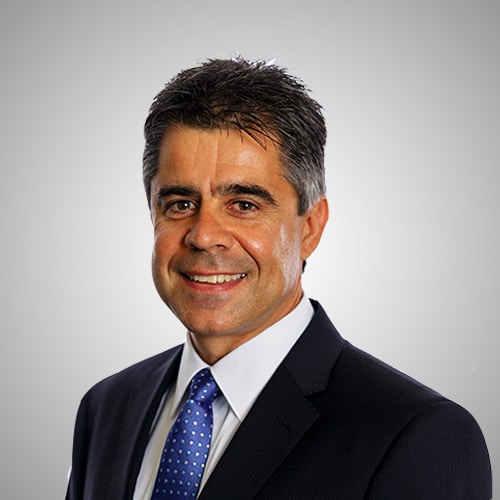- News articles
First published in the Financial Review on 17 May 2023.
Getting the timing right on contributions is just one of a host of things SMSF members need to pull together before the end of the tax year.
With June 30 fast approaching it’s time for self-managed super fund members and trustees to get their affairs in order.
It is critical for individuals to review any super contributions (whether tax-deductible or non-concessional) made this financial year to consider whether there is an opportunity to make additional personal contributions to boost retirement savings.
On the tax-deductible front, individuals may be eligible to claim a tax deduction for personal super contributions. These contributions, known as concessional contributions, are generally subject to 15 per cent tax when deposited into a super fund.
Individuals earning more than $250,000 a year may be liable to pay an additional 15 per cent tax on these contributions. Remember, the concessional contributions cap this financial year is $27,500.
Claiming a tax deduction for personal super contributions also requires you to lodge a valid notice of intent form. Without a valid notice, acknowledged by the fund, a tax deduction will not be permitted, and the contribution will be treated as a non-concessional contribution – potentially leading to excess contributions.
Individuals aged 67 or older at the time of making the contribution must also meet a work test to claim this tax deduction. This test requires an individual to be gainfully employed for at least 40 hours over 30 consecutive days, at any time, during the financial year.
Alternatively, there is a one-off opportunity to rely on a work test exemption for recent retirees with a total superannuation balance (TSB) less than $300,000 on June 30, 2022.
For someone whose TSB was less than $500,000 on June 30, 2022, their concessional contribution cap for 2022-23 may be higher than the standard $27,500 cap if they’re able to access unused concessional contribution cap amounts that have been carried forward since July 1, 2018.
Take Joanna, for example. In 2020-21, the annual concessional contributions cap was $25,000. She contributed $15,000, meaning her $10,000 of unused cap from that year was automatically carried forward. In 2021-22, the annual concessional contributions cap was $27,500 of which Joanna contributed $20,000, again carrying forward the unused cap of $7,500.
So, in 2022-23, her unused concessional contributions cap amounts carried forward total $17,500. Adding these amounts to her standard $27,500 cap, and assuming her TSB was less than $500,000 on June 30, 2022, means Joanna can make up to $45,000 of tax-deductible contributions in 2022-23 without exceeding her cap.
Whether or not someone is working, if they are under 75, they can choose to make non-deductible, after-tax super contributions known as non-concessional contributions. In 2022-23, the non-concessional contributions cap is $110,000 – provided an individual’s TSB was less than $1.7 million on June 30, 2022.
Further, individuals under 75 on July 1, 2022 may be able to bring forward up to two years of non-concessional contributions into a single year, depending on their TSB at June 30, 2022.
For example, some people will be able to contribute up to three years of non-concessional contributions – $330,000 in a single year – if they haven’t triggered the bring-forward rule in the previous two years and their TSB was below $1.48 million on June 30, 2022.
Where their total super balance on June 30, 2022 was between $1.48 and $1.59 million, they may only be able to bring forward one year of non-concessional contributions in 2022-23, that is, up to $220,000.
Before triggering the bring-forward cap in 2022-23, it’s worth remembering that the general transfer balance cap (TBC) will be increasing to $1.9 million at July 1, 2023. The value of the TBC is important as it is used to determine the thresholds affecting the amount that someone can make as a non-concessional contribution.
For example, the TSB threshold allowing an individual to trigger the bring-forward rules and make the maximum $330,000 non-concessional contribution in 2023-24 is expected to increase to $1.68 million. So getting the timing of contributions right may make a difference to how much one’s retirement savings can be boosted.
Let’s look at Stephanie’s situation. At 68 and just retired, she had a TSB of $1.45 million on June 30, 2022. Stephanie, who wants to boost her super balance before starting a pension in the next 12 months, has two options.
She can contribute $330,000 in 2022-23, increasing her total benefits to about $1.78 million with which to start a pension. Provided she starts her pension on or after July 1, 2023, she will be well within the indexed TBC and a nil tax rate will apply to the earnings generated by her pension assets.
Alternatively, she can make a $110,000 non-concessional contribution in 2022-23, increasing her total benefits on June 30, 2023 to about $1.56 million. As her benefits will be well below the indexed thresholds that are expected to apply from 1 July 2023, Stephanie will be able to contribute an additional $330,000 under the three-year bring forward cap in 2023-24.
Over a potentially short timeframe, Stephanie has boosted her retirement savings by $440,000. With benefits just under the indexed TBC of $1.9 million, Stephanie can start her pension in 2023-24 and generate tax-free returns on all assets supporting her pension.

Opinion piece written by
Peter Burgess, CEO,
SMSF Association



